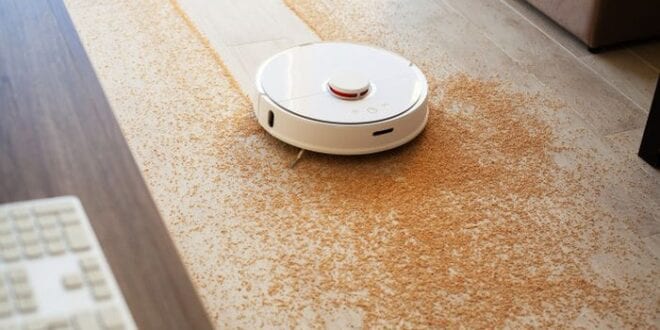Robotic vacuums are all the rage now as people often perceive them as a robot maids that will save them some elbow grease when doing one of the most dreaded chores for them. But do they live up to the hype? Will robo vacs ever replace or match the performance of a regular upright vacuum? Let’s find out!
What Are Robotic Vacs?
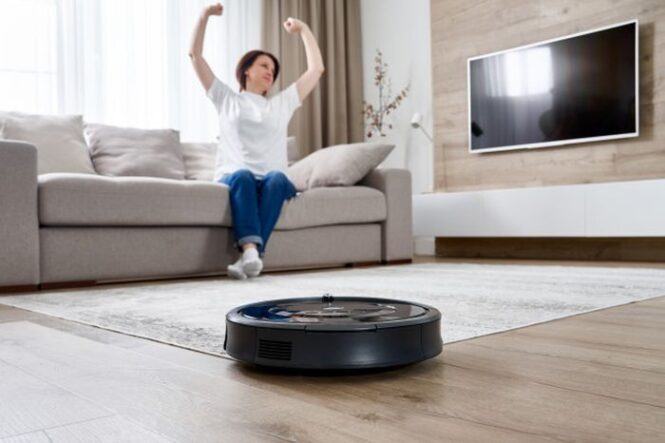
Robotic vacuums are self-propelled mini vacuum cleaners that can move around the house on wheels and do light cleaning until their one-quart dust bin fills up or until they run out of battery. Depending on their price, some robo vacuums are equipped with more sensors than the other, some of them can map rooms in real time and be controlled remotely, while most know when to returning to their docking station when their battery gets too low.
Almost all robotic vacuums have a docking station that doubles as a (wireless) charger when they are out of juice. Battery autonomy of some robot bacs is as little as 15 minutes while the autonomy of more expensive robots climbs to nearly a couple of hours of continuous use.
But considering their high-tech features, are robot vacuums better than your regular upright vacuum cleaner in the long run? Long story short, they are not. Standard vacuum cleaners are far superior to robo vacs in all major departments: speed, performance, autonomy and even user-friendliness.
Robot Vacuums vs Upright Vacuums: Suction
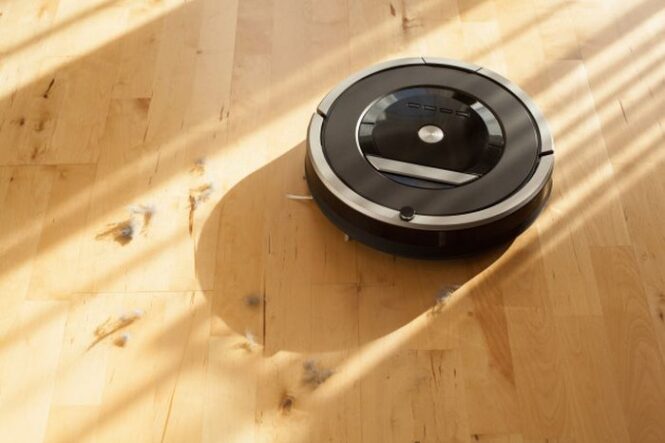
Robot vacuums just don’t have what it takes to get the job done as well and as fast as a regular vacuum cleaner. If we look at the anecdotal evidence, just imagine your cat tipping over a flowerpot.
If you instruct the robot vac to do the sweeping, it will need around 1 to 2 hours to get the carpet satisfactorily clean, with a lot of dizzying back and forth until it runs out of battery juice.
By contrast, with an upright vacuum, you can get the carpet squeaky clean in as little as 10 minutes without having to worry about a less-than-satisfactory job. Why is that? Robo vacs greatly lag behind regular vacs in the power compartment. They have a tiny motor, are battery powered, and are often no better than a handheld vac. So, don’t expect robots to do deep cleaning as your classic vac.
Don’t believe the anecdotal evidence? Then check out Consumer Reports researchers’ small experiment on a Samsung robo vac’s suction versus a Miele upright’s. The upright vac was able to suck in half the debris while the robovac was able to suck just 20%. In other words, a fancy $1,000 robo vac is nowhere near as powerful as a let’s say $100 classic vac that you can buy at Walmart.
Robo Vacs vs Upright Vacs: Price
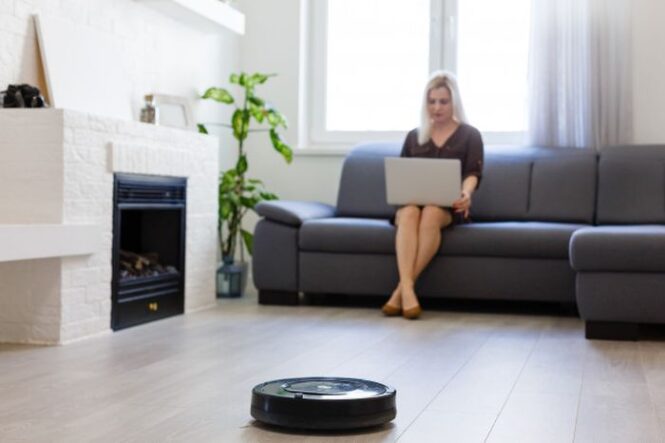
Robotic vacs are currently very expensive (check out pickvacuumcleaner.com, for instance, to get a clue on what that might mean). So, unless money is not a problem, it is best to invest those big $$$ you would have to shell out for a decent robot vac into a high-quality upright that will outperform the robot with flying colors and last many years after the robo vac has been tossed away as technologically obsolete.
Robo Vacs vs Upright Vacs: Speed
Robot vacuums are painfully slow and if the carpet is too thick, the task becomes even more cumbersome. Usually what a robo vac can do in an hour an upright needs around 5 to 10 minutes to finish off. Robo vacs also bump into obstacles harder than a regular vac which slows them down even further. Plus, they may also tip over, which is game over for the robo vac unless you step in.
Robot Vacuums vs Upright Vacuums: User Friendliness
Yes, using a classic upright for a long time may lead to back pain or stiff neck and shoulders or both. So, letting a robo vac do all the hard work seems like a no-brainer, right? Wrong. Robo vacs need a lot of input from your part. Because they have a small dust bin, they need your help to be emptied out, and that can happen more often than you would do with an upright vacuum cleaner.
Also, before turning on a robot vac you need to make sure that there are no crazy obstacles in its path such as socks or forsaken food leftovers that could clog it or throw it into an existential crisis. The Internet abounds with horror stories starring a robo vac and a careless owner (like this one, don’t say we didn’t warn you.)
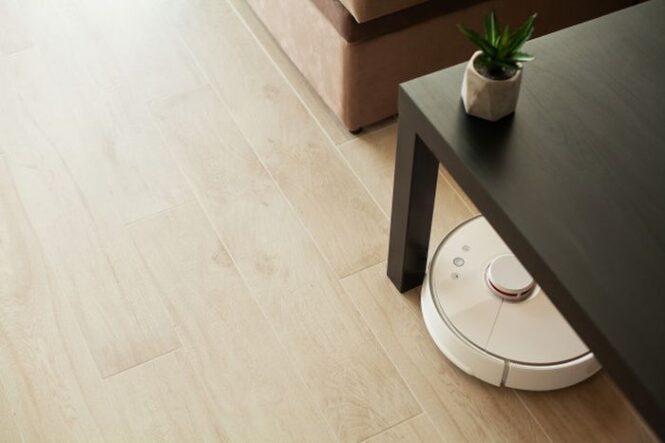
What’s more, no robo cleaner can match a human when it comes to noticing if they missed a spot or if they thoroughly cleaned a certain portion. Quality control is up to you. Robot vacuums cannot climb stairs either, so if you live in a multiple story mansion, pull out the upright vacuum and get that elbow grease running unless you wait for it to turn into cholesterol.
Last but not least, robotic vacuum cleaners might run out of juice before the job gets done and cannot return to the exact spot they stopped cleaning once their battery is full again. You’ll have to step in again or just get the upright and finish the job.
Robot Vacuum vs Upright Vacuums: Privacy
With an upright vacuum cleaner, you don’t have to worry about privacy as it won’t beam your home and personal data to a faceless entity. A robot vacuum cleaner can do just that, behind your back (because who in their right mind actually reads the terms and conditions for using a smart vac’s app anyways.)
For instance, according to an NYT report, a duo of very popular high-end Rombas, which, by the way, are some of the best robot vacs on the Blue Planet, can collect spatial data on your home to create an interactive map which reportedly helps them prevent obstacles and collisions.
But the scary part is that the map of your crib can be shared with Google, Amazon, and other entities with little to no respect for human privacy. The silver lining is that you can instruct your robo vac to no longer connect to the cloud, but to stay on the safe side, you better get a cheaper and “less smart” robot vacuum.
To Wrap It Up
Is a robot vac a real match to your trusty upright? The answer is no. Robotic vacuums are slower, less trustworthy, and way more expensive than classic vacs. They are great for spot cleaning and for showing off to your family and friends. For deep cleaning and other men’s jobs, keep the upright around.
 Imagup General Magazine 2024
Imagup General Magazine 2024
